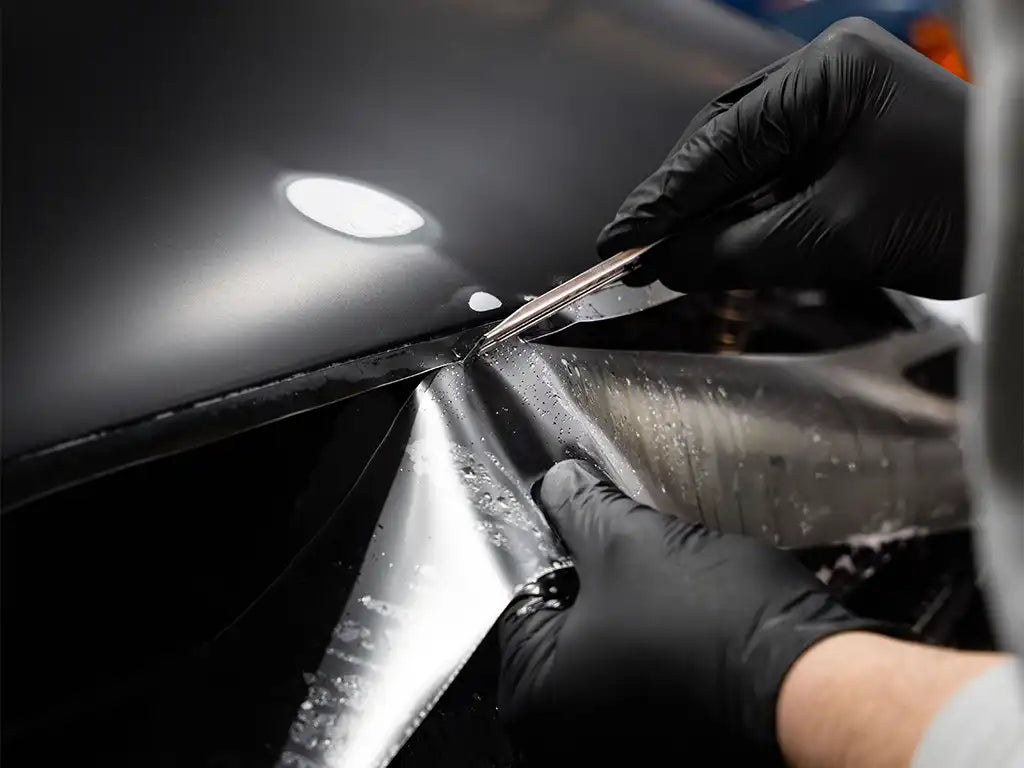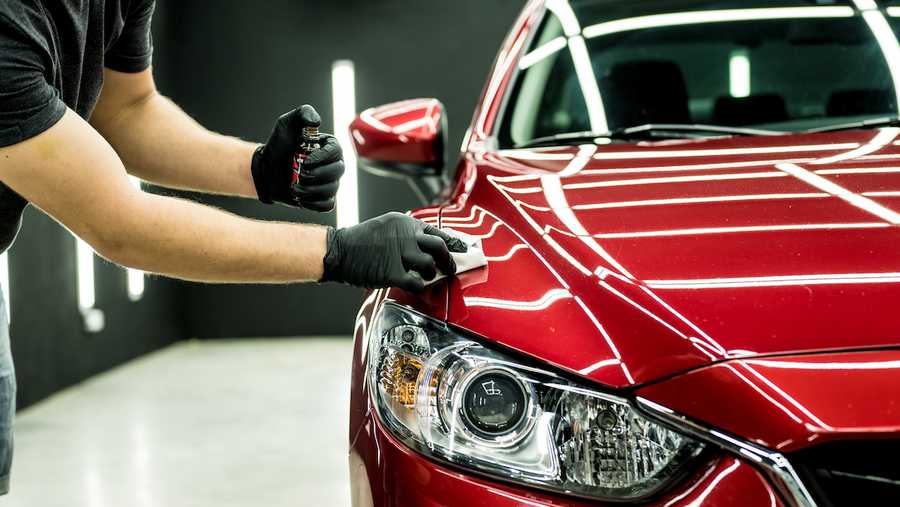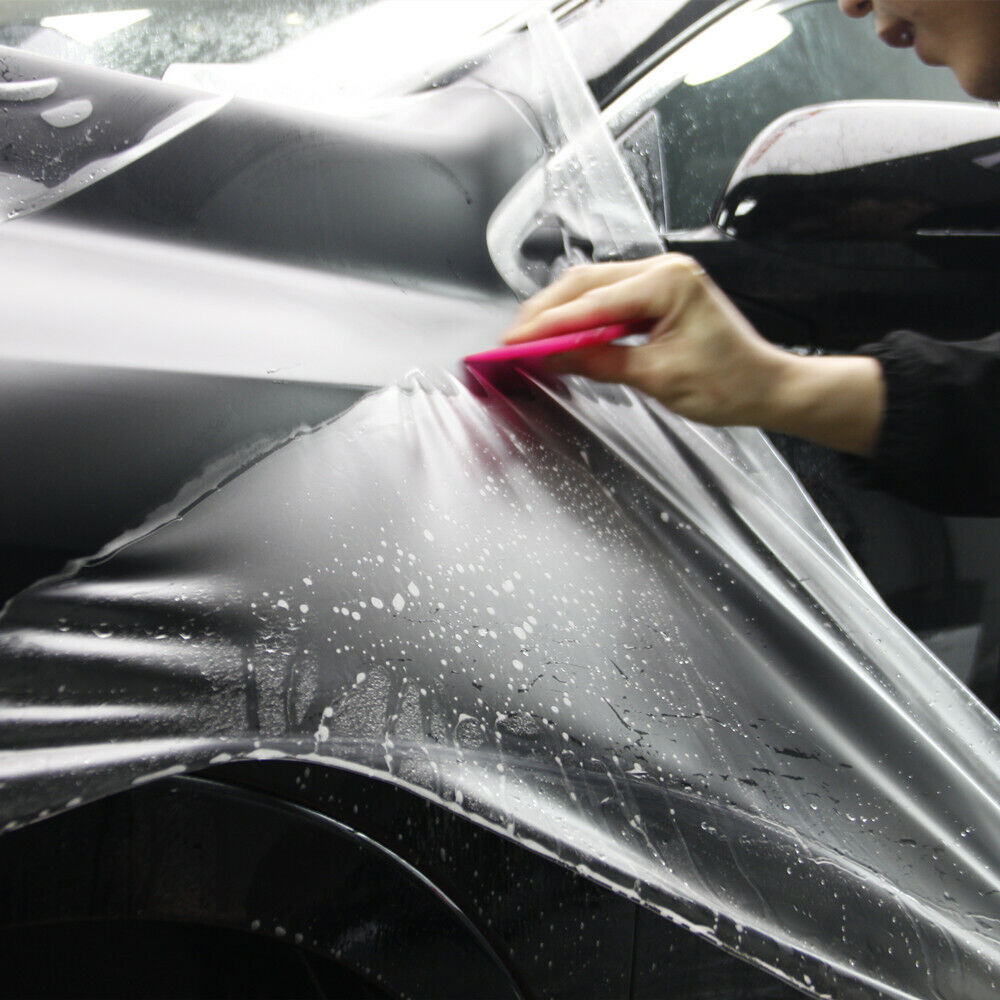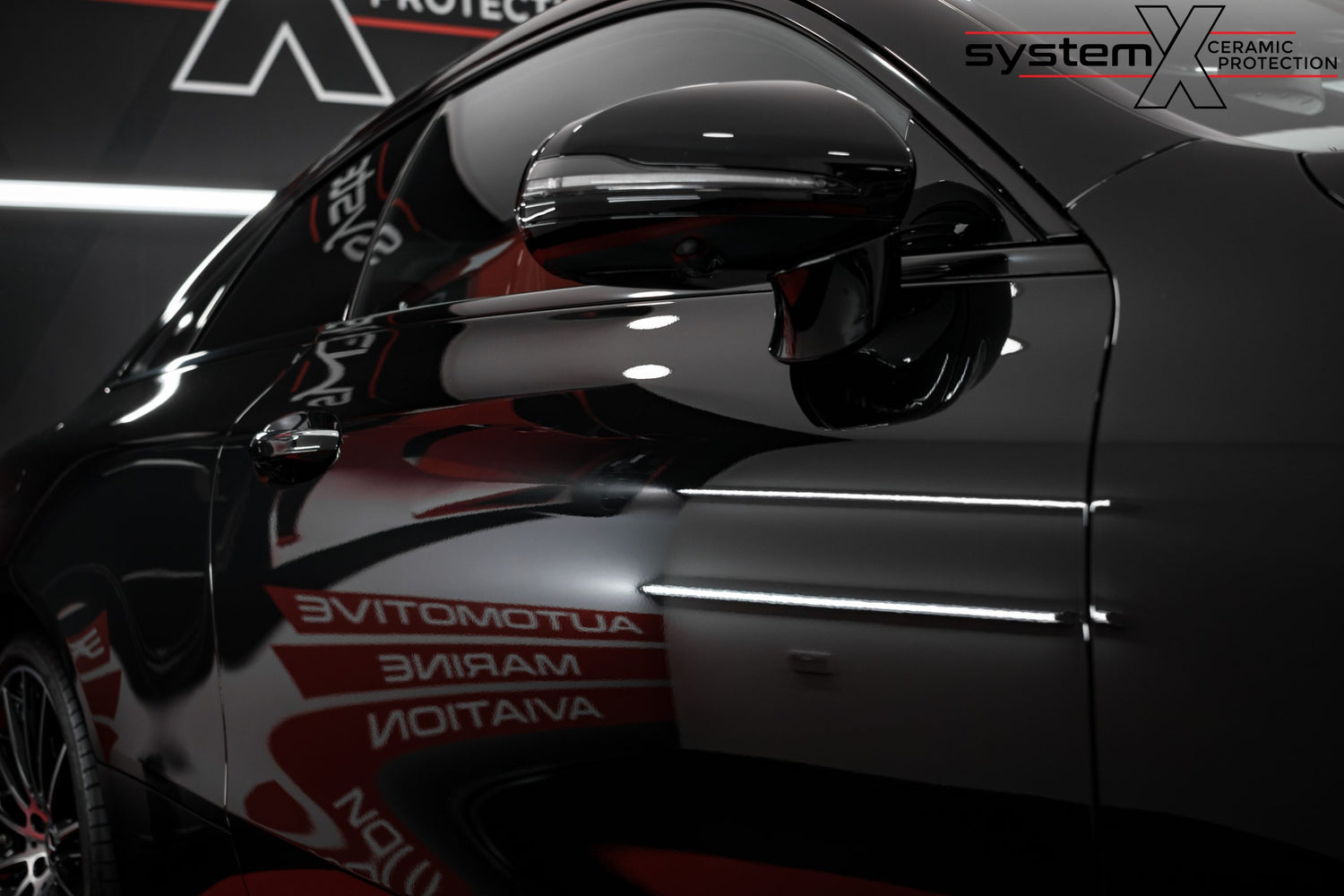
PPF vs. Ceramic Coating
When it comes to protecting your vehicle’s exterior, two of the most popular options are Paint Protection Film (PPF) and Ceramic Coating. Both offer unique benefits, but they cater to different needs and budgets. Whether you're a car enthusiast wanting to maintain your vehicle’s showroom finish or someone looking for minimal upkeep, this guide will help you understand the differences, advantages, and disadvantages of each option.

What Is Paint Protection Film (PPF)?
Paint Protection Film, often referred to as PPF or “clear bra,” is a transparent, thermoplastic urethane film applied to the surface of a vehicle. Originally developed for military use to protect helicopter blades, PPF has evolved into a must-have product for automotive paint protection.
PPF provides a durable, physical barrier between your car’s paint and environmental hazards. It’s particularly valued for its self-healing properties, meaning minor scratches and scuffs disappear with heat exposure.
The Pros and Cons of Paint Protection Film (PPF)
Impact Resistance
- PPF is excellent at protecting against rock chips, road debris, and minor abrasions.
- Ideal for high-impact areas like the hood, front bumper, and side mirrors.
Self-Healing Properties
- Most modern PPF products can self-heal minor scratches and swirl marks when exposed to heat. This keeps your car looking newer for longer.
UV Protection
- PPF blocks harmful UV rays, preventing paint from fading and preserving your car’s factory finish.
Custom Coverage Options
- PPF can be applied to specific high-wear areas or the entire vehicle, offering flexibility based on your needs and budget.
Matte or Glossy Finish Options
- PPF is available in both glossy and matte finishes, allowing you to customize your car’s appearance.
Durability
- High-quality PPF can last up to 10 years with proper maintenance, offering excellent long-term protection.
Cons of PPF
Cost
- PPF is expensive, with prices ranging from $500 for partial coverage to over $6,000 for a full vehicle wrap.
Installation Challenges
- Professional installation is a must, as improper application can result in bubbling, peeling, or visible edges.
Maintenance
- Although durable, PPF requires regular cleaning and maintenance to prevent discoloration, especially on lighter-colored cars.
Yellowing Over Time
- Some PPF products, particularly lower-quality ones, may yellow or discolor over time due to UV exposure.
Not Completely Invisible
- Despite being clear, the edges of PPF may be noticeable, particularly on darker vehicles.

What Is Ceramic Coating?
Ceramic Coating is a liquid polymer applied to a vehicle’s paint that chemically bonds with the factory paint, creating a hydrophobic and durable layer. Unlike PPF, which is a physical film, Ceramic Coating enhances the surface at a chemical level, making it highly resistant to water, dirt, and minor scratches.
While Ceramic Coating doesn’t offer the same level of impact resistance as PPF, it provides long-lasting gloss and ease of maintenance, making it a favorite among car owners who value aesthetics and convenience.
The Pros and Cons of Ceramic Coating
Pros of Ceramic Coating
Enhanced Gloss and Shine
- Ceramic Coating provides a deep, reflective finish that enhances your car’s appearance, making it look freshly waxed at all times.
Hydrophobic Properties
- The coating repels water, dirt, and grime, making your car easier to clean and less prone to water spots.
UV Protection
- Like PPF, Ceramic Coating protects against UV rays, reducing the risk of paint oxidation and fading.
Resistance to Chemical Stains
- The coating resists chemical contaminants such as bird droppings, tree sap, and acidic rain, which can otherwise damage your paint.
Cost-Effective Maintenance
- While the initial cost of Ceramic Coating is high, it eliminates the need for regular waxing, saving time and money in the long run.
Longevity
- High-quality Ceramic Coatings can last 2–5 years or more, depending on the product and maintenance.
Cons of Ceramic Coating
No Impact Resistance
- Ceramic Coating won’t protect against rock chips, scratches, or dents. It’s primarily a chemical and aesthetic barrier.
Professional Application Needed
- While DIY Ceramic Coating kits are available, professional application ensures even coverage and optimal bonding.
Cost
- Professional Ceramic Coating application costs can range from $600 to $2,000 or more, depending on the vehicle’s size and condition.
Maintenance Still Required
- Although it reduces maintenance, Ceramic Coating still requires regular washing with specific techniques and products to maintain its hydrophobic properties.
Not a Cure-All Solution
- Ceramic Coating enhances and protects the existing paint but cannot fix paint imperfections or replace traditional paint protection.
Which Should You Choose?
The decision between PPF and Ceramic Coating ultimately depends on your needs, driving habits, and budget:

Choose PPF if:
- You frequently drive on highways or in areas prone to road debris.
- You prioritize protection over aesthetics.
- You own a luxury or high-performance vehicle that you want to preserve.

Choose Ceramic Coating if:
- You want a glossy, low-maintenance finish.
- You’re looking for moderate protection against chemical damage and UV rays.
- You’re on a tighter budget but still want excellent paint enhancement.
Both Paint Protection Film (PPF) and Ceramic Coating offer incredible benefits, but they cater to different needs. PPF provides unparalleled physical protection, while Ceramic Coating offers exceptional gloss and ease of maintenance. For those who want the best of both worlds, combining these technologies can deliver unmatched protection and aesthetics.
No matter which route you choose, protecting your vehicle’s paint is an investment in its longevity, value, and appearance. Consult with a trusted professional to ensure the best results, and enjoy the peace of mind that comes with knowing your car is protected.
-

What Is Paint Protection Film (PPF)? A Comprehe...
Discover the ultimate guide to Paint Protection Film (PPF)! Learn what PPF is, how it protects your car’s paint from rock chips, scratches, and UV damage, and explore its self-healing...
What Is Paint Protection Film (PPF)? A Comprehe...
Discover the ultimate guide to Paint Protection Film (PPF)! Learn what PPF is, how it protects your car’s paint from rock chips, scratches, and UV damage, and explore its self-healing...
-

PPF vs. Ceramic Coating: Understanding the Pros...
Discover the ultimate guide to PPF vs. Ceramic Coating! Learn the pros and cons of Paint Protection Film and Ceramic Coating, from impact resistance and durability to gloss enhancement and...
PPF vs. Ceramic Coating: Understanding the Pros...
Discover the ultimate guide to PPF vs. Ceramic Coating! Learn the pros and cons of Paint Protection Film and Ceramic Coating, from impact resistance and durability to gloss enhancement and...


